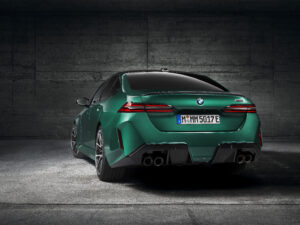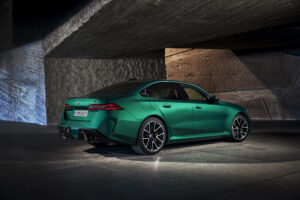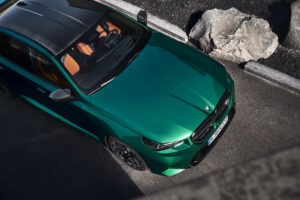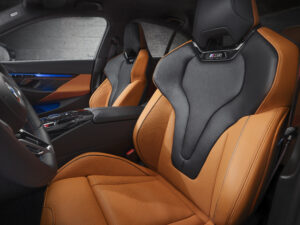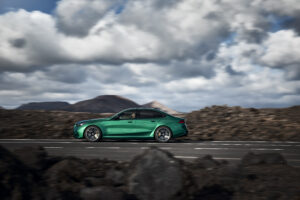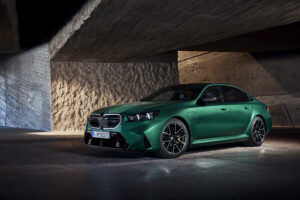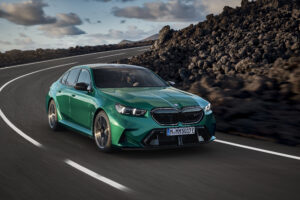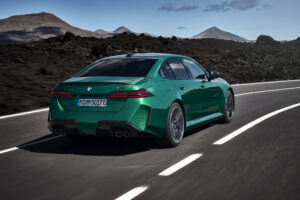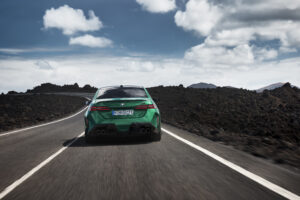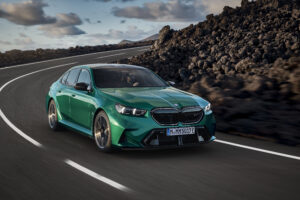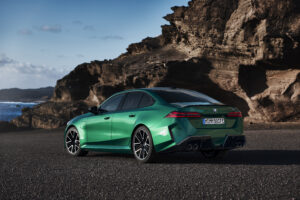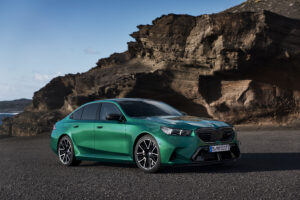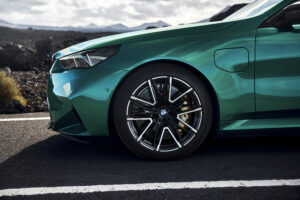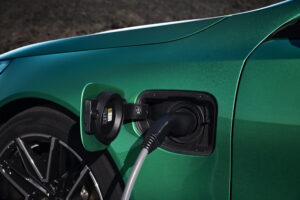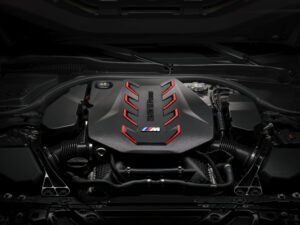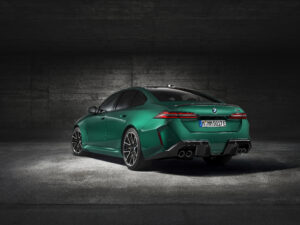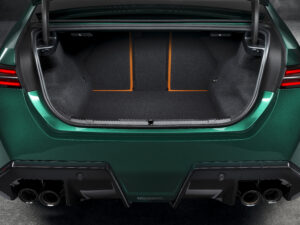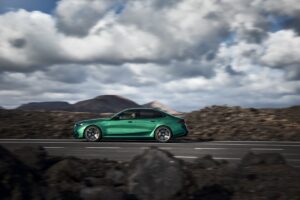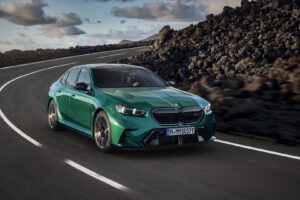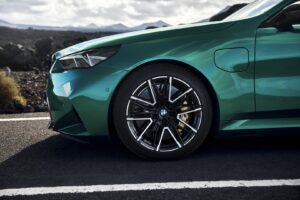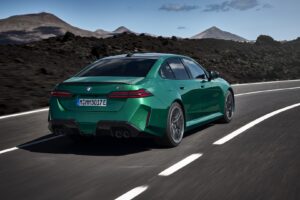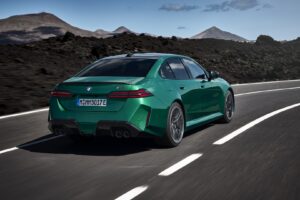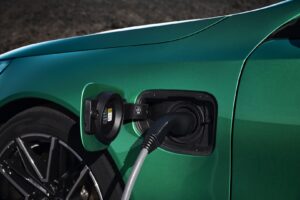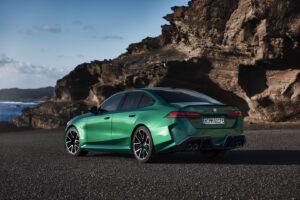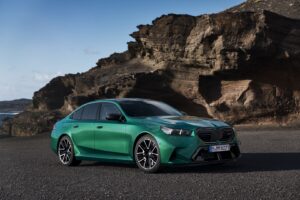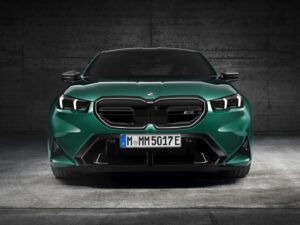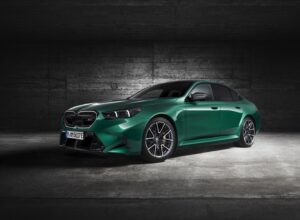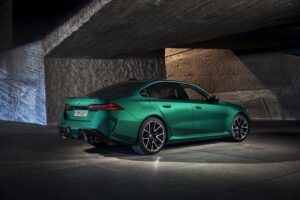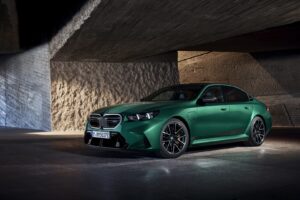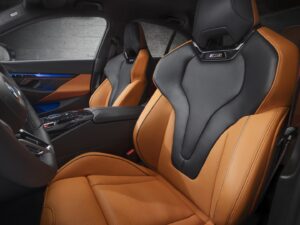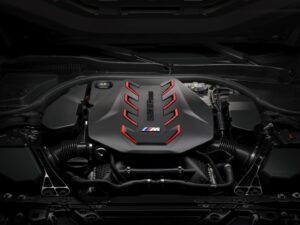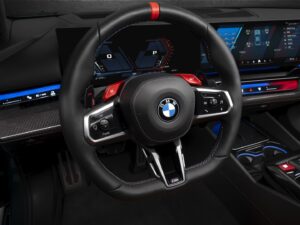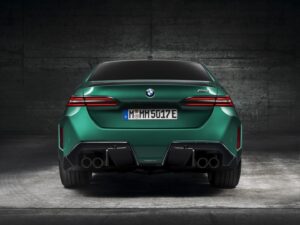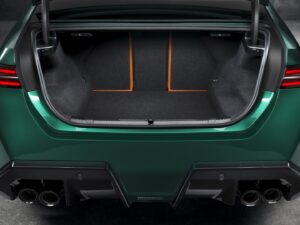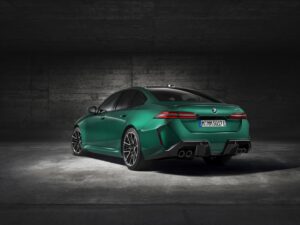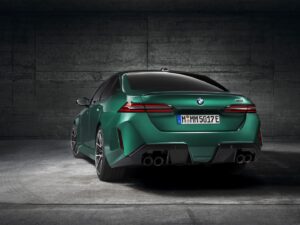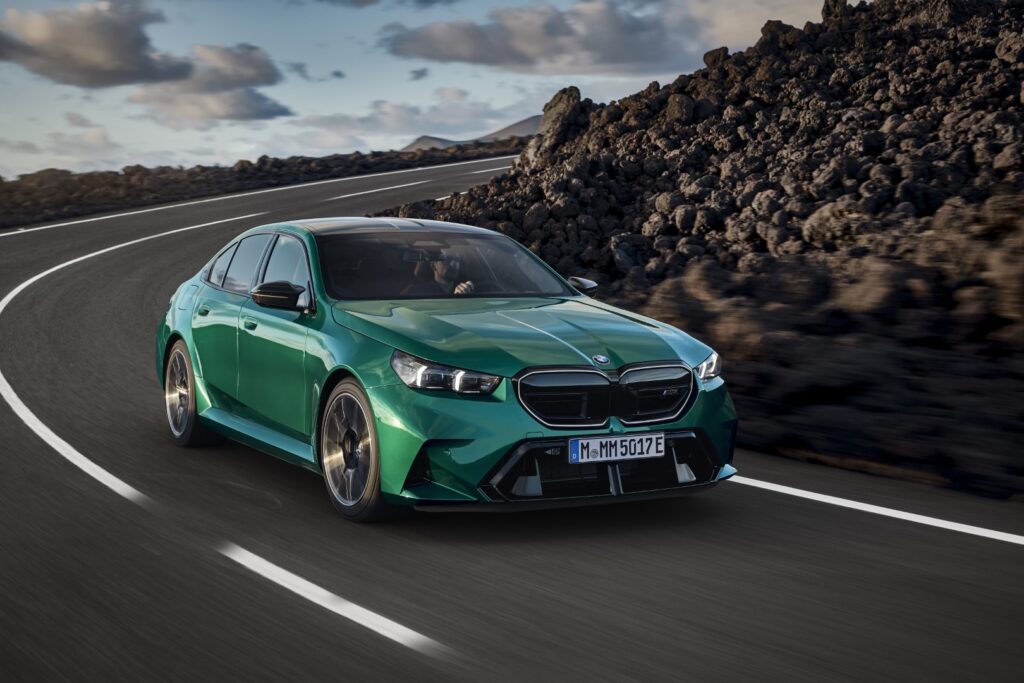
Few vehicles ignite enthusiasts’ passion like the BMW M5. After a prolonged buildup, the company’s latest super sedan has arrived, and it’s the most powerful M5 ever. However, it’s also the heaviest due to its standard hybrid powertrain.
Under the hood, there’s XM DNA featuring a twin-turbocharged 4.4-litre V8 and a single electric motor integrated into the eight-speed transmission. The total system output is 717 hp (535 kW) and 1000 nm (738 lb-ft) of torque, slightly less than the XM Label. The engine produces 577 hp (430 kW), and the motor adds 194 hp (145 kW), mirroring the XM. The hybrid battery is smaller, at 14.8 kWh.
BMW claims the new M5 accelerates from 0 to 100 km/h (62 mph) in 3.5 seconds. Its top speed is limited to 250 km/h (155 mph), but with the M Driver’s Package, it increases to 305 km/h (190 mph). This speed contrasts with the quiet, electric-only operation typical of a plug-in hybrid. In Electric mode, BMW estimates 40 km (25 miles) of silent range on battery power alone. However, pressing the throttle or manually shifting the M Steptronic transmission activates the engine for more power.
The new M5 offers three standard drive modes. Comfort mode combines gasoline and electric power for a smooth, efficient ride, with the gas engine frequently shutting off and the suspension and transmission in their least intrusive settings. Sport and Sport Plus keep the engine running constantly and enhance performance, but the optional Dynamic and Dynamic Plus modes are necessary for the full M5 experience. These modes optimize the powertrain for maximum power and improve the cooling system for track use.
Dynamic mode also allows switching the xDrive all-wheel-drive system to rear-wheel drive. Turning off the stability control provides “an even more unfiltered performance experience,” according to BMW. The electronically controlled rear differential lock can send power left or right as needed, functioning similarly to a stability control system but using power instead of brakes for better handling. This setup enables faster, more confident cornering, further aided by active rear steering that turns up to 1.5 degrees.
Braking is handled by six-piston calipers on 16.1-inch discs in front and single-piston floating calipers on 15.7-inch discs at the rear. Optional M Carbon ceramic brakes increase the front disc size to 16.5 inches and reduce weight by 55 pounds. The brakes are housed behind staggered wheels, 20 inches in front and 21 inches at the rear.
The M5’s bespoke driveline setup includes more than just stiffer 5-Series springs. The five-link rear axle is model-specific, featuring strengthened control arms, camber control arms, and guide arms for higher g-loading. The double-wishbone front axle is more rigid with M5-specific hubs.
Additional bracing for the strut towers, underfloor bracing, and stronger mounts for various chassis components enhance stability. The standard Adaptive M suspension features electronically controlled dampers that drivers can fine-tune.
Drivers can customize individual settings for the suspension, brakes, steering, transmission, and xDrive all-wheel-drive system. BMW’s 8.5 operating system includes M-specific displays for the driver and front-seat passengers. A heads-up display is standard, and for those times when you don’t feel like driving, you can stream videos or play AirConsole games.
Visually, the M5 is unmistakable with its quad exhaust tips. It’s slightly wider by 3 inches in front and 1.9 inches at the back. BMW redesigned the M5’s sides compared to the 5 Series to give it a more aggressive stance. The front fascia features vents and contrasting angles, while a subtle lip spoiler adds character to the rear. Nine standard colours are available at launch, with numerous BMW Individual shades for a unique look.
The 2025 BMW M5 weighs 2,444 kg (5,390 lbs) which makes it almost 500 kg heavier than its predecessor and this might chase a fair amount of buyers away.
The worldwide market launch of the new BMW M5 including in South Africa will start in the fourth quarter of 2024.

